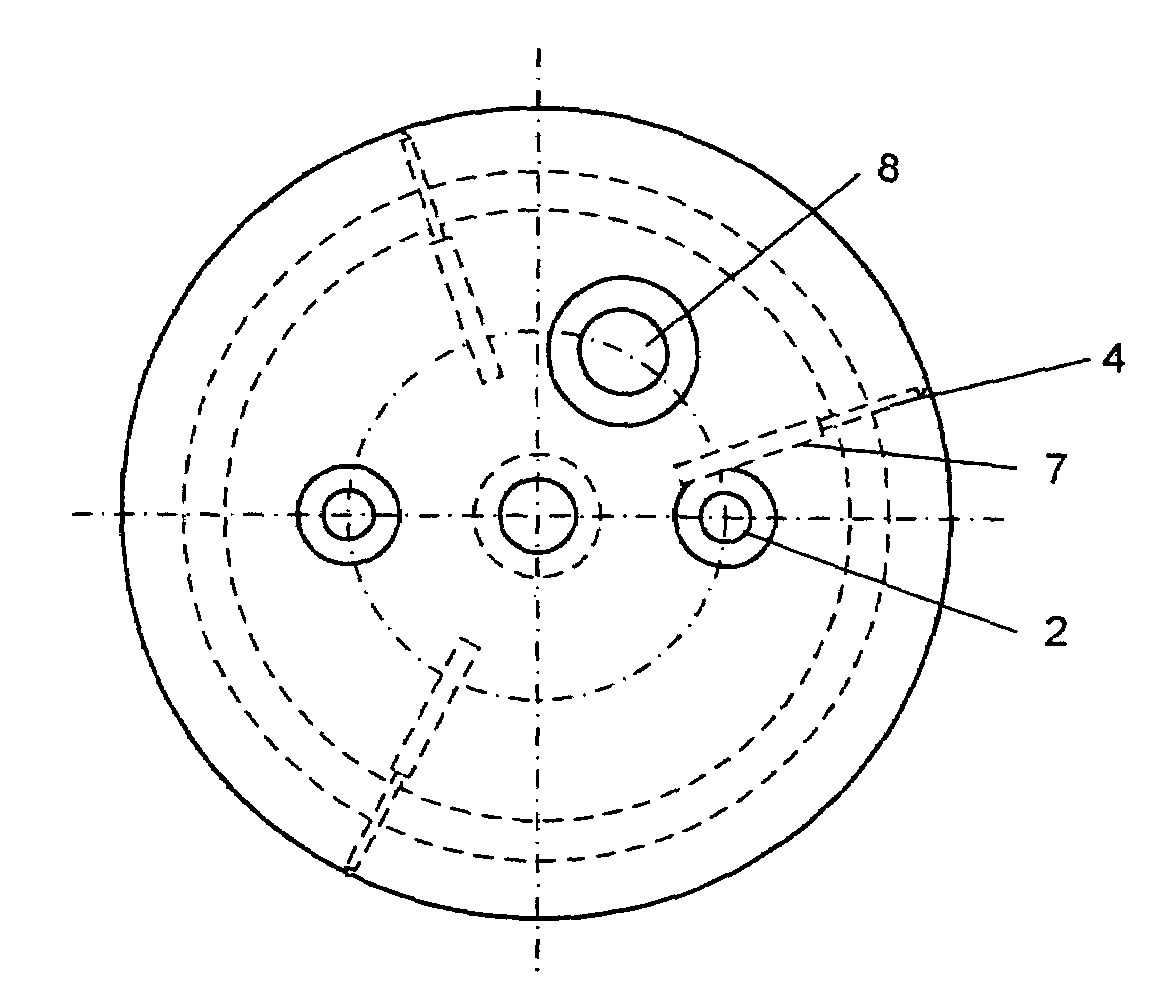Cryostat configuration with thermally compensated centering
a cryostat and centering technology, applied in the field of cryostat configuration, can solve the problems of containers contacting each other, increasing cryogenic losses, heat bridges, etc., and achieve the effect of preventing excessive bending
- Summary
- Abstract
- Description
- Claims
- Application Information
AI Technical Summary
Benefits of technology
Problems solved by technology
Method used
Image
Examples
Embodiment Construction
[0049]FIGS. 1a and 1b show embodiments of the inventive cryostat configuration with a cryocontainer 1 for keeping a cryogenic liquid, which is mounted to an outer jacket 3 of the cryostat configuration via suspension tubes 2. Centering devices which are connected to the cryocontainer 1 and contact the outer jacket 3 via centering elements 4 are provided at the lower end of the cryocontainer 1 in order to center the cryocontainer 1 relative to the outer jacket 3 of the cryostat configuration. The ends 5 of the centering elements 4 abut the outer jacket 3 or are mounted thereto. At the other end 6, the centering elements are connected to an actuator 7 which exerts pressure or tension onto the centering element 4.
[0050]FIGS. 2a and 2b show embodiments of the inventive cryostat configuration, wherein the cryocontainer 1 comprises a neck tube designed as asymmetric opening 8. This asymmetric configuration of the opening 8 is shown, in particular, in FIG. 2b.
[0051]Three centering element...
PUM
 Login to View More
Login to View More Abstract
Description
Claims
Application Information
 Login to View More
Login to View More - R&D
- Intellectual Property
- Life Sciences
- Materials
- Tech Scout
- Unparalleled Data Quality
- Higher Quality Content
- 60% Fewer Hallucinations
Browse by: Latest US Patents, China's latest patents, Technical Efficacy Thesaurus, Application Domain, Technology Topic, Popular Technical Reports.
© 2025 PatSnap. All rights reserved.Legal|Privacy policy|Modern Slavery Act Transparency Statement|Sitemap|About US| Contact US: help@patsnap.com



